Elms are deciduous and semi-deciduous trees comprising the genus Ulmus in the family Ulmaceae. Elm trees are native to the Northern Hemisphere, with a significant presence in North America, Europe, and Asia.
There are about 30 to 40 species of elms, which can make identification challenging due to their tendency to hybridize and the development of local seed-sterile vegetatively propagated microspecies in some areas, particularly in the Ulmus field elm (Ulmus minor) group.
Many are cultivated for their attractive form and foliage. Elm leaves are doubly toothed and usually lopsided at the base. The petalless flowers appear before the leaves and are borne in clusters on jointed stems. The nutlike fruit, surrounded by a flat, sometimes hairy, winglike structure, is called a samara.
Dutch elm disease, caused by the fungi Ophiostoma ulmi and Ophiostoma novo-ulmi, is a significant threat to elm trees worldwide. The disease can spread from tree to tree by elm bark beetles, which carry the fungal spores.
Dutch elm disease has drastically reduced wild and cultivated elm populations throughout much of Europe and North America.
The wood of elm trees is durable and resistant to splitting. It is used for furniture, flooring and cabinetry. It is also used for constructing boats and farm buildings. Some elm species have medicinal uses.
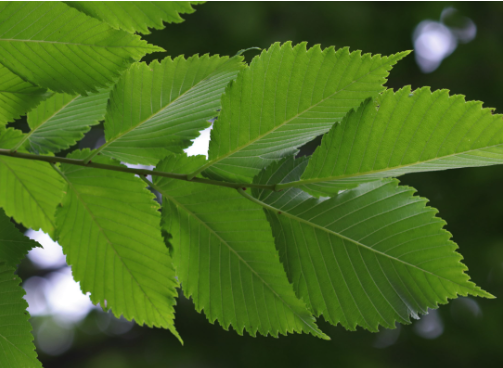
List of Elm Tree Species
- American Elm (Ulmus americana)
- Slippery Elm (Ulmus rubra)
- Chinese Elm (Ulmus parvifolia)
- Siberian Elm (Ulmus pumila)
- English Elm (Ulmus minor)
- European White Elm (Ulmus laevis)
- Wych Elm (Ulmus glabra)
- Cherry-bark Elm (Ulmus prunifolia)
- Camperdown Elm (Ulmus glabra ‘Camperdownii’)
- Cedar Elm (Ulmus crassifolia)
- Rock Elm (Ulmus thomasii)
- Japanese Elm (Ulmus davidiana var. japonica)
- Dutch Elm (Ulmus × hollandica)
- David Elm Tree (Ulmus davidiana Planch)
American Elm (Ulmus americana)

This is a tall and stately tree, native to eastern North America. It can grow up to 100 feet tall and has a vase-shaped canopy. It was once a common sight lining streets and in public spaces across the United States but its populations have been devastated by Dutch elm disease.
It is tolerant of cold, dry conditions and performs well in urban environments. The tree’s leaves are unequal at the base. Its bark is grayish-brown, developing deep, diamond-shaped furrows as it matures. The flowers are small appearing in spring before the leaves.
Slippery Elm (Ulmus rubra)
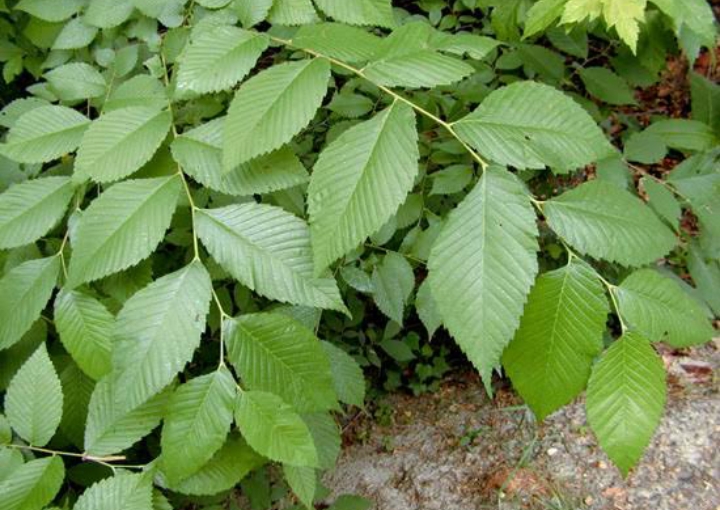
This is a smaller elm tree, also known as red elm or moose elm is native to eastern North America. It has a similar appearance to the American elm, but with smaller leaves.
This species is almost similar to the American elm, however, it is mainly distinguished from the American elm by its downy twigs, chestnut brown or reddish hairy buds and slimy red inner bark.
Chinese Elm (Ulmus parvifolia)

The tree is native to eastern Asia, including China, Taiwan, Japan, North Korea, South Korea and Vietnam. Also referred to Chinese elm or lacebark elm it features graceful, upright growth habit, long pendulous branches, and excellent foliage.
Because of its small leaves and ability to be trained into miniature shapes, this is a popular elm tree for bonsai cultivation. During winter its bark exfoliate to reveal a beautiful patchwork of grey, green, orange, and brown.
Siberian Elm (Ulmus pumila)

This is a fast-growing, cold-hardy elm tree that is native to Siberia, northern China, Korea, and Japan. While reaching up to 70 feet tall with an open crown, it can become invasive due to its abundant wind-dispersed seeds.
The leaves change from dark green to yellow in autumn. It is a popular choice for landscaping in areas with cold winters. This tree is usually not good for landscape use due to its weak, easily damaged limbs and branches.
English Elm (Ulmus minor)

This elm tree is native to Europe and western Asia. It was once a common sight in the British Isles, but has been severely affected by Dutch elm disease.
This fast-growing giant reached up to 100 feet with a vase-shaped canopy. It is easily identified by its rough, fissured bark and glossy, green leaves with toothed edges.
The English elm has a unique bark, which is grey-brown and rough, often with suckers growing from the base of the trunk. The tree can grow to a height of 30 meters and can live for more than 100 years. Its leaves are rough to the touch on the top surface and are smaller than those of the wych elm.
European White Elm (Ulmus laevis)
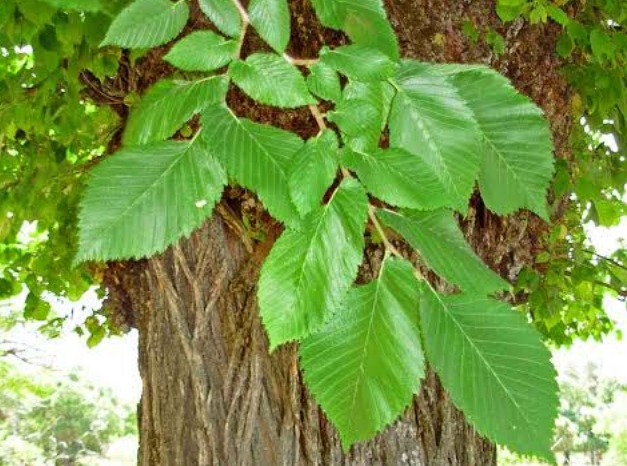
Ulmus laevis also referred to as European white elm, fluttering, spreading elm, stately elm or the Russian elm is native to central and eastern Europe.
It grows to over 30 meters with a broad, open crown. The leaves are glossy, dark green and flutter in the breeze, earning it the nickname “fluttering elm.” Unlike other European elms, it has a surprising resistance to Dutch elm disease.
The bark is smooth at first, then in early maturity breaks into thin grey scales, which separate with age into a network of grey-brown scales and reddish-brown under-bark and finally is deeply fissured in old age like other elms.
Wych Elm (Ulmus glabra)

Wych elm tree also referred to as Scots elm, is a European giant with a range, stretching from Ireland all the way to Iran. This type of elm is known for its tough, supple young shoots, which are always without the corky ridges, characteristic of many elms. This majestic tree can reach a staggering height of 40 meters with a dense crown.
The Wych Elm leaves are larger than those of other elms, tapering to a sudden point at the tip and are hairy on both sides. The tree produces winged fruit, with the thin wings curving inwards to form a circle or oval around the seed in the center.
The name ‘wych’ does not refer to a link to witches or magic, but actually means ‘pliant’ or ‘supple’ in old English, relating to the wych elm’s properties as a wood for making Welsh bows.
Cherry-bark Elm (Ulmus prunifolia)

The Cherry-bark Elm also sometimes called the Cherry-leafed Elm, isn’t quite as widely known as some other elms, but it’s a fascinating tree nonetheless.
Unlike the American Elm (Ulmus americana) which it can be confused with, the Cherry-bark Elm is endemic to just a specific region of China, specifically the Hubei province, where it grows at elevations between 1000 and 1500 meters.
This tree can reach up to 30 meters in height and has a dark gray bark that is smooth. Its leaves are narrow and vary in shape from elliptic to lanceolate, resembling cherry leaves They are borne on twigs that lack the corky wings or layers seen in some other elm species. The wind-pollinated flowers are inconspicuous and appear on second-year shoots from February.
Ulmus prunifolia is extremely rare in cultivation and was one of the 12 Chinese species under evaluation by Dr George Ware at the Morton Arboretum in Illinois in 2009.
Cedar Elm (Ulmus crassifolia)
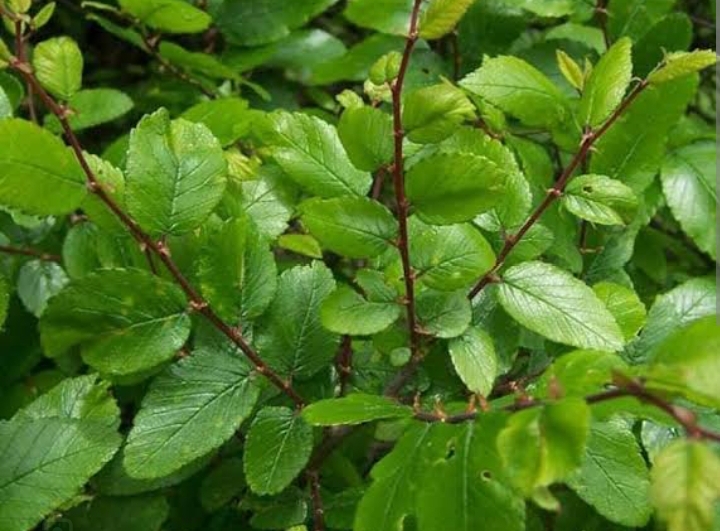
The Cedar Elm also known as the Texas Cedar Elm, is a medium to large tree native to south-central North America, thriving in areas like southern and eastern Texas, southern Oklahoma, Arkansas, and Louisiana.
Scattered populations can also be found in western Mississippi, southwest Tennessee, and north-central Florida, with its range extending into northeastern Mexico. It holds the title of the most common elm tree in Texas.
The common name “cedar elm” is derived from the tree’s association with juniper trees, locally known as cedars. The bark is light brown to gray, with flattened ridges that break into thin, loose, flaky scales. The fruit is a small winged samara, maturing quickly after the flowering in late fall.
Cedar elm is susceptible to Dutch elm disease, though less so than American elm, and is also moderately damaged by the elm leaf beetle.
Rock Elm (Ulmus thomasii)
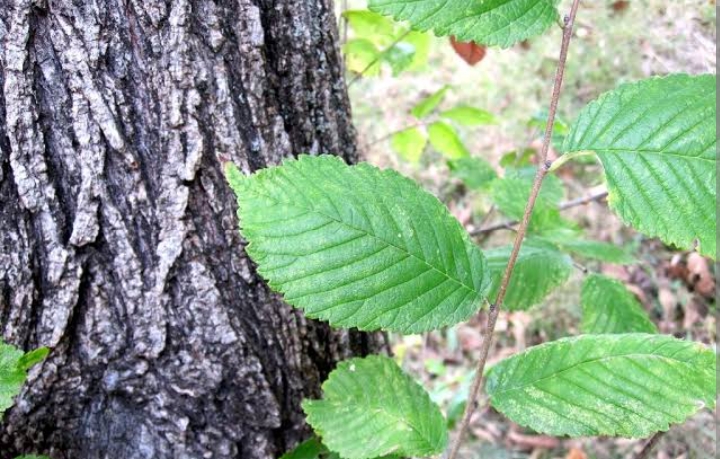
Rock Elm is a large tree that primarily grows in the Midwestern United States. It is often called cork elm due to the irregular, thick corky wings that develop on its older branches. This tree thrives in moist loamy soils, particularly in southern Ontario, lower Michigan and Wisconsin, where a town has been named after it.
Rock Elm can reach heights of 30 meters (100 feet) and live for up to 300 years. It has a cylindrical crown with upright, short branches, and is unusual among North American elms for often being monopodial. The tree produces red-green flowers in racemes up to 40 mm (2 inches) long, which appear two weeks before the leaves from March to May.
Dutch Elm (Ulmus × hollandica)
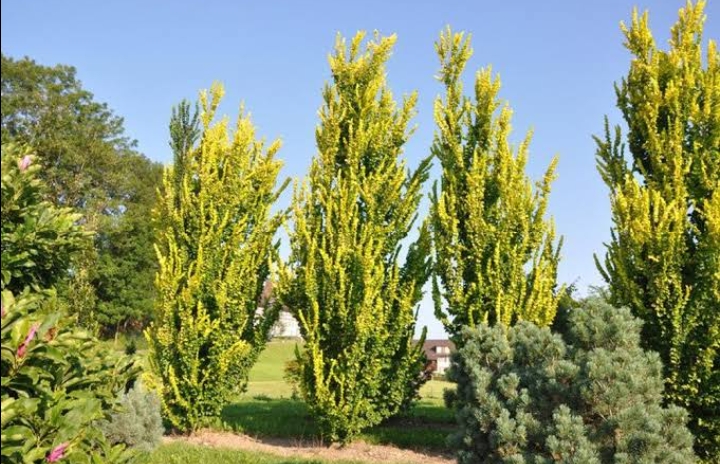
Dutch elm, is a natural hybrid between the Wych elm (Ulmus glabra) and the field elm (Ulmus minor). The Dutch Elm has a long history of cultivation and was popular in 18th-century estate plantations in England. The tree has a dense, regular, and rounded to oval crown. The leaves are slender egg-shaped with a long tip.
Interestingly, the “Dutch Elm” moniker is a bit of a geographical mix-up. While the hybrid originated in Europe, the name stuck in England, while in the Netherlands, this very elm was called the “English Elm.”
These trees are fast-growing and can reach heights of 50-60 feet. They are good for urban parks and mixed coastal shelter-belts.
David Elm Tree (Ulmus davidiana Planch)

The David Elm Tree (Ulmus davidiana Planch) is a relatively small elm tree, reaching a maximum height of about 15 meters (50 feet) with a slender trunk that measures less than 0.3 meters (1 foot) in diameter at breast height.
It is native to areas across eastern Asia, including China, Mongolia, Korea, Siberia and Japan. Its bark remains smooth for comparatively long time, before becoming longitudinally fissured.
The first specimens of this elm were collected in the hills north of Beijing, China in 1873, and it was named after the French missionary and botanist Armand David who collected them.
Camperdown Elm (Ulmus glabra ‘Camperdownii’)
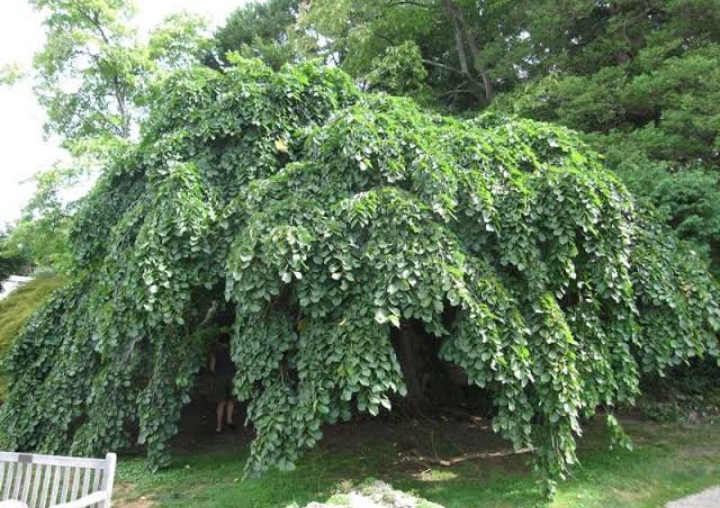
Unlike most elms with an upright form, the Camperdown Elm boasts a weeping or pendulous growth habit and twisted branches. It grows to a height of 15-25 feet, forming a round dome of contorted branches that gracefully weep, sometimes almost kissing the ground, creating a curtain-like effect.
The Camperdown Elm inherits the typical Wych Elm leaves, which are elliptical to obovate in shape with a serrated margin. They are green in summer and turn a golden yellow in fall before dropping.
The tree has a rich history, originating from a seedling discovered in about 1850 at Camperdown House, near Dundee, Scotland. It is often grafted onto an Ulmus americana rootstock for cultivation in the United States.
Japanese Elm (Ulmus davidiana var. japonica)

The Japanese Elm is an Asiatic elm species native to much of continental northeast Asia and Japan. It is usually found in swamp forest on young alluvial soils, although much of this habitat has been lost to intensive rice cultivation.
The grows with a round dome of contorted branches that gracefully weep. It is a fast-growing tree reaching a height of 15-25 feet, and it forms a broad crown similar to the Wych elm or, in some cases, grows tall with a narrow crown similar to the English elm.
Young Japanese Elms have smooth bark, but as they mature, it develops a charmingly textured network of fissures and ridges.